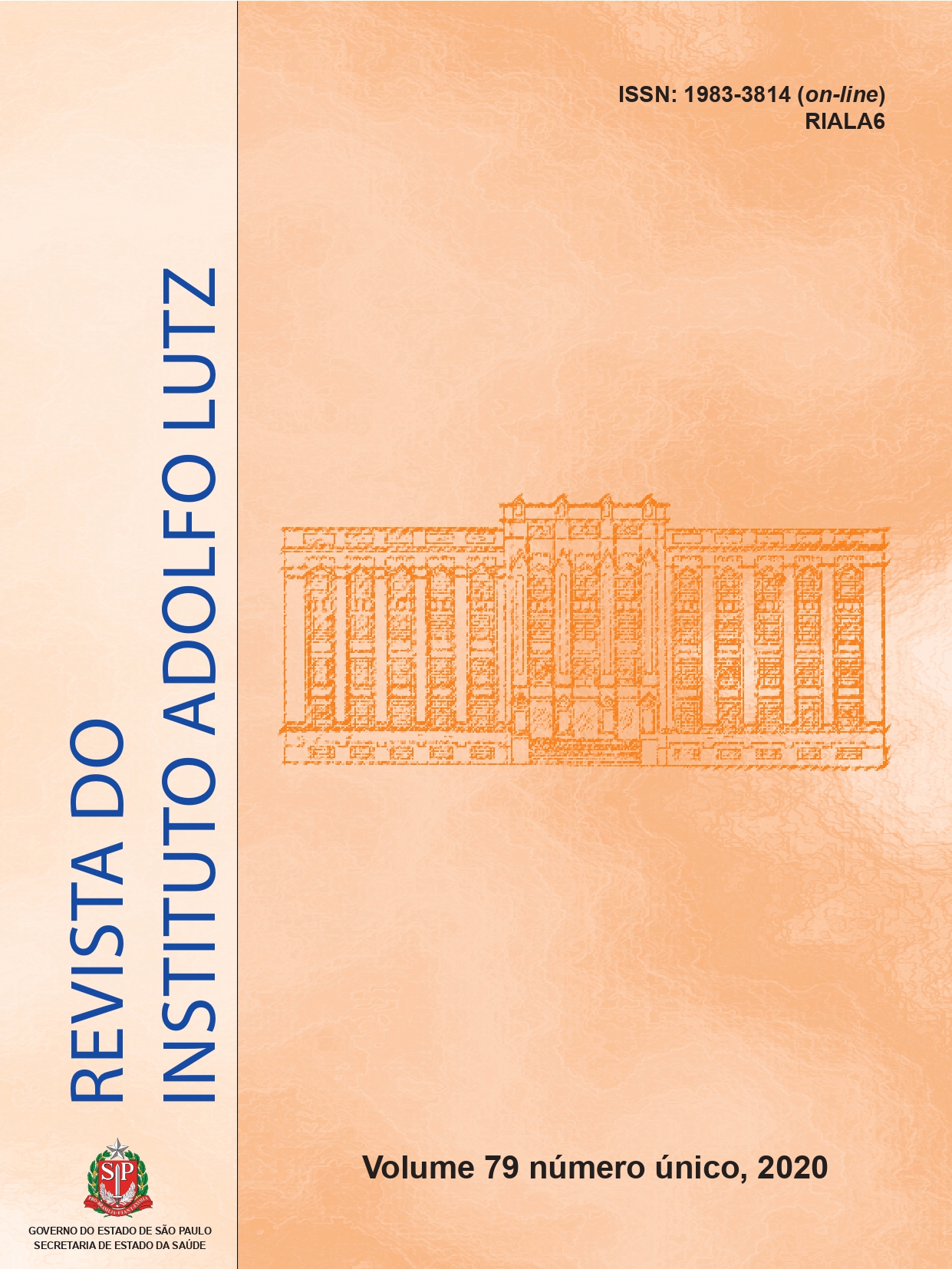Abstract
This integrative review aims to analyze the scientific publications in the last twelve years on
triatomines found at Ceará State. For this, a search was performed in the Biblioteca Virtual
em Saúde (BVS) databases with association of the descriptors “Chagas Disease”, “Triatomines”
and “Brazil”. After applying the inclusion, exclusion criteria and analysis of their content, eight
articles were selected for the analysis and discussion. Some species of triatomines found in the
Northeast region are of extreme epidemiological importance since they are associated with human
households. The most prevalent species with epidemiological importance due to their large
distribution in Ceará and presence in the peridomestic environment are: Triatoma brasiliensis,
Triatoma pseudomaculata, Panstrogylus megistus, Panstrogylus lutzi and Rhodnius nasutus.
Several species of triatomines have the capacity to transmit T. cruzi and the ability to adapt to
the peridomestic and domestic environment turning humans more susceptible to infection, thus
requiring surveillance and vector control strategies.
References
D’Andrea PS, De Oliveira TG et al. Ecology of
Triatoma brasiliensis in northeastern Brazil: Seasonal
distribution, feeding resources, and Trypanosoma
cruzi infection in a sylvatic population. J Vector
Ecol. 2010;35(2):385-94. https://doi.org/10.1111/
j.1948-7134.2010.00097.x
2. Araújo CAC, Waniek PJ, Xavier SCC, Jansen AM.
Genotype variation of Trypanosoma cruzi isolatesfrom different Brazilian biomes. Exp Parasitol.
2011;127(1):308-12. https://doi.org/10.1016/j.exppara.2010.07.013
3. Gonçalves TCM, Freitas ALC, Freitas SPC. Surveillance
of Chagas disease vectors in municipalities of the
state of Ceará, Brazil. Mem Inst Oswaldo Cruz.
2009;104(8):1159–64. https://doi.org/10.1590/S0074-
02762009000800013
4. Sarquis O, Carvalho-Costa FA, Toma HK, Georg I,
Burgoa MR, Lima MM. Eco-epidemiology of Chagas
disease in northeastern Brazil: Triatoma brasiliensis, T.
pseudomaculata and Rhodnius nasutus in the sylvatic,
peridomestic and domestic environments. Parasitol Res.
2012;110(4):1481–5. https://doi.org/10.1007/s00436-
011-2651-6
5. Carbajal de la Fuente AL, Minoli SA, Lopes CM,
Noireau F, Lazzari CR, Lorenzo MG. Flight dispersal
of the Chagas disease vectors Triatoma brasiliensis and
Triatoma pseudomaculata in northeastern Brazil. Acta
Trop. 2007;101(2):115–9. https://doi.org/10.1016/j.
actatropica.2006.12.007
6. Coutinho CF de S, Souza-Santos R, Teixeira
NFD, Georg I, Gomes TF, Boia MN et al. An
entomoepidemiological investigation of Chagas
disease in the state of Ceará, Northeast Region of
Brazil. Cad Saude Publica. 2014;30(4):785-93. https://
dx.doi.org/10.1590/0102-311X00176512
7. Lima AFR, Jeraldo V LS, Silveira MS, Madi RR,
Santana TBK, Melo CM.. Triatomines in dwellings
and outbuildings in an endemic area of Chagas
disease in northeastern Brazil. Rev Soc Bras Med Trop.
2012;45(6):701-6. https://dx.doi.org/10.1590/S0037-
86822012000600009
8. Freitas ALC, Freitas SPC, Gonçalves TCM, Lima
Neto AS . Vigilância Entomológica dos Vetores da
Doença de Chagas no Município de Farias Brito,
estado do Ceará. Cad Saúde Colet. 2007;15(2):231–40.
Disponível em: https://pesquisa.bvsalud.org/portal/
resource/pt/lil-520086
9. Vasconcelos ASOB, Freitas EC, Andrade MC, Lima
MM, Pereira LS, Gomes KCMS et al. Doença de Chagas:
situação vetorial no município de Limoeiro do Norte CE,
no período de 2006 a 2009. Rev Inst Adolfo Lutz.
2013;72(4):295-301. Disponível em: http://www.ial.
sp.gov.br/resources/insituto-adolfo-lutz/publicacoes/
rial/10/rial72_4_completa/arquivos-separados/1577.pdf
10. Lima MM, Carvalho-Costa FA, Toma HK, Borges-Pereira
J, de Oliveira TG, Sarquis O. Chagas disease and housing
improvement in northeastern Brazil: a cross-sectional
survey. Parasitol Res. 2015;114(5):1687-92. https://doi.
org/10.1007/s00436-015-4350-1
11. Valença-Barbosa C, Fernandes FA, Santos HLC, Sarquis
O, Harry M, Almeida CE et al. Molecular identification
of food sources in triatomines in the brazilian
northeast: roles of goats and rodents in chagas disease
epidemiology. Am J Trop Med Hyg. 2015;93(5):994-7.
https://dx.doi.org/10.4269/ajtmh.15-0156
12. Parente CC, Bezerra FSM, Parente PI, Dias-Neto RV,
Xavier SCC, Ramos AN et al. Community-based
entomological surveillance reveals urban foci of chagas
disease vectors in Sobral, State of Ceara, Northeastern
Brazil. PLoS One. 2017;12(1):e0170278. http://doi.
org/10.1371/journal.pone.0170278
13. Bernardo-Pedro T, Sousa DM, Freitas SPC, Freitas ALC,
Santos-Mallet JR, Tassinari W S. Triatomine dispersion
rates and their association with socioeconomic and
environmental conditions in Northeastern Brazil,
from 2009 to 2013. Rev Inst Med Trop Sao Paulo.
2019;61:e47. https://dx.doi.org/10.1590/s1678-
9946201961047
14. Silva MBA, Barreto AVMS, Silva HA da, Galvão C, Rocha
D, Jurberg J et al. Synanthropic triatomines (Hemiptera,
Reduviidae) in the state of Pernambuco, Brazil:
geographical distribution and natural Trypanosoma
infection rates between 2006 and 2007. Rev Soc Bras
Med Trop. 2012;45(1):60-5. https://dx.doi.org/10.1590/
S0037-86822012000100012
15. Sarquis O, Borges-Pereira J, Mac Cord JR, Gomes
TF, Cabello PH, Lima MM. Epidemiology of chagas
disease in Jaguaruana, Ceará, Brazil. I. Presence of
triatomines and index of Trypanosoma cruzi infection
in four localities of a rural area. Mem Inst Oswaldo Cruz.
2004;99(3):263-70. https://dx.doi.org/10.1590/S0074-
02762004000300004

This work is licensed under a Creative Commons Attribution 4.0 International License.
Copyright (c) 2020 Instituto Adolfo Lutz Journal
